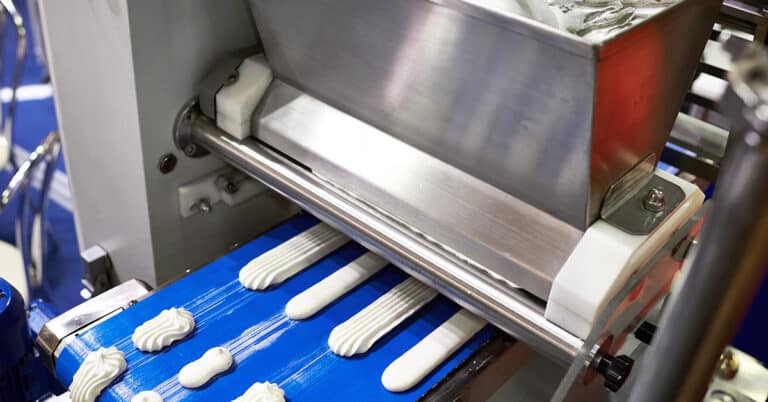What is Root Cause Failure Analysis (RCFA)?
Root cause failure analysis is one of the most effective tools for pinpointing and solving manufacturing production issues efficiently and accurately. This is a detailed methodology used to investigate an issue within a manufacturing environment and create a plan for its resolution. Among the many problems that this process is used to address are equipment failures, safety incidents, product quality concerns and more. It is a proven, trusted procedure that leads to successful outcomes because it is focused on finding and resolving the underlying cause of any issues, rather than simply taking care of the surface-level symptoms. In manufacturing, root cause analysis has the potential to improve overall product quality, plant efficiency and worker safety.
The basic root cause failure analysis steps
Root cause analysis in manufacturing is intended to zero in on the very specific, underlying causes of a problem. Here is a breakdown of the RCFA process:
- Triggering Incident — Before the process gets underway, there needs to be an identifiable problem within the manufacturing environment. This can range from a malfunctioning piece of equipment to a flaw in a finished product.
- Identifying symptoms — In this step, the symptoms, problems or abnormalities affecting production are identified and documented. It is critical that the problem statement be verifiable as a fact, rather than simply stating that something is wrong. For example, “Finished product is 2 ounces heavier than intended specifications” is more helpful as a starting point than “Finished product is out of spec.”
- Assessing addressable causes — A list of all potential causes for the identified symptoms is generated.
- Collecting and analyzing data — Using available data, the list of potential causes can be narrowed down. This portion of the process is critical because without it time may be wasted exploring unproven hypotheses.
- Isolating and testing variables — With a narrower subset of potential root causes, analysis should be performed for each potential factor, isolated from all the others.
- Identifying the cause(s) — Once testing and analysis are complete, the root cause of failure can be addressed.
- Creating and implementing an action plan — When accurate information about root causes is known, an effective solution can be crafted and implemented.
- Eliminate root causes — Once the specifics of the problem have been identified and the action plan has been created, all that remains to do is to follow the plan and resolve the main issue.
Reasons for performing a root cause failure analysis
A root cause failure analysis identifies the underlying issues behind a production problem. This form of equipment failure analysis applies the adage “treat the cause, not the symptom” to manufacturing, where a symptom or unrelated problem is too often treated because it is the easiest one to identify and address. While this tactic can provide temporary solutions, problems will continue until the root cause is identified and remedied. Post-failure analysis also makes maintenance more efficient by directing maintenance and repair resources at actual problems, not symptoms – ensuring tangible, lasting results. Maintenance efforts that simply “put a Band-Aid” on production equipment-related issues could lead to permanent asset damage. It’s clear that the RCFA process provides numerous benefits, but what are the risks of not using RCFA?
- Wasted use of maintenance resources because problems are not actually solved.
- Equipment damage when underlying or unaddressed issues continue.
- An increase in rejected output due to inaccurate operations.
- Unneeded equipment replacement — if a root cause is never identified, machinery may be written off as faulty.
Tools and techniques in RCFA
Far from being a monolithic process, RCFA utilizes a number of structured methodologies that fall under its umbrella. The most frequently used of these root cause failure analysis processes include:
- 5 Whys method: This failure analysis methodology is based in the idea that asking “why” up to five times gets you as close to the root cause of the problem as possible. The idea is to keep asking “why” until you can’t any longer, which means the ultimate cause of the issue has been discovered.
- Fishbone diagram: Also known as the Ishikawa method, this involves creating a diagram with the problem as the head and potential causes branching out from it like the bones of a fish. The causes typically are grouped together into categories such as materials, methods and measurement to make the analysis as comprehensive as possible.
- Pareto analysis: Based on the idea that 80% of outcomes result from 20% of causes, this technique seeks to rule out which potential causes of an issue are least likely and instead focus on the most likely scenarios. This helps cut down on wasted effort and bring attention to the most common sources of faults.
- Fault tree analysis: One of the most complete failure analysis methods, this creates a flow chart starting from the failure event and lists all potential causes underneath it. By visualizing the relationships between failures and their sources, technicians can be sure they don’t overlook anything that could be to blame.
Industry-specific RCFA examples
The universality and versatility of RCFA methodologies means their principles can be tailored easily to practically any industry. Here are some examples of how RCFA can offer practical solutions for specific industries’ unique challenges:
- Automotive: Breakdowns in robotic assembly lines could come down to something very small. Using RCFA can drill down to individual sensors or material defects that may be the source of the issue.
- Consumer packaged goods: Delays caused by faulty packaging equipment can be resolved thanks to the RCFA process. Using the process can identify worn-out components and lead to preventive maintenance strategies that are more efficient.
- Pharmaceutical and medical devices: Working with sterile manufacturing processes means any sources of contamination need to be discovered with pinpoint accuracy. RCFA can do this and ensure manufacturers stay in compliance with strict FDA standards. It also ensures enhanced product safety that is critical for maintaining the public’s trust.
Maintenance and root cause failure analysis
Root cause failure analysis is a highly efficient way to identify and solve problems. By utilizing this practice, you gain the best chance to avoid deep-rooted issues before they cause serious damage. ATS offers a technology-driven approach to maintenance including predictive maintenance, remote monitoring and analytics and sensors to help modernize your facility, enable data-based decision-making, and provide all of the benefits discussed here. For more information, contact us today.






